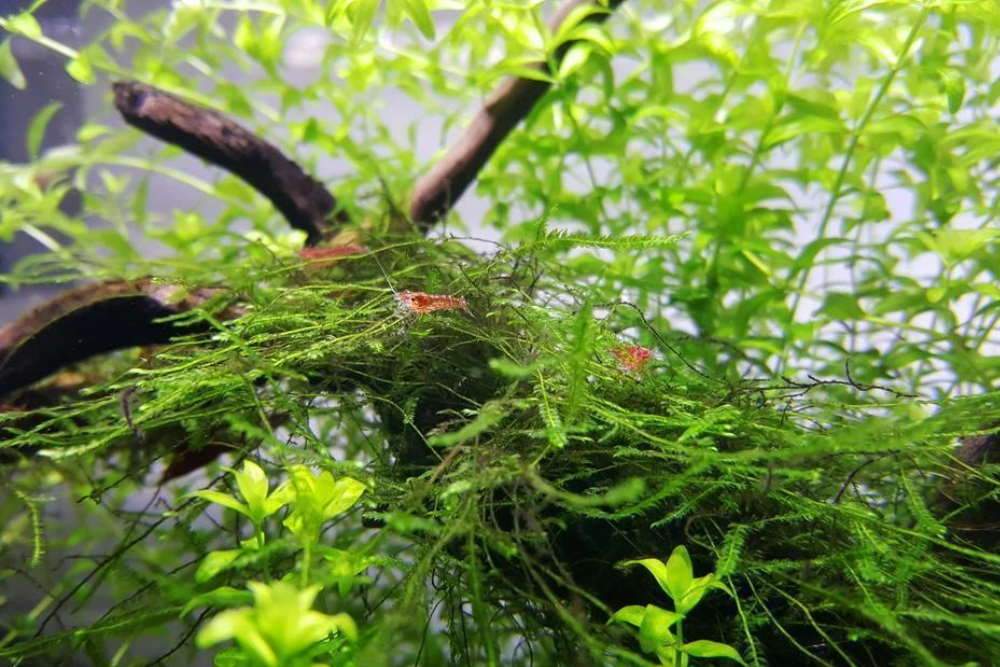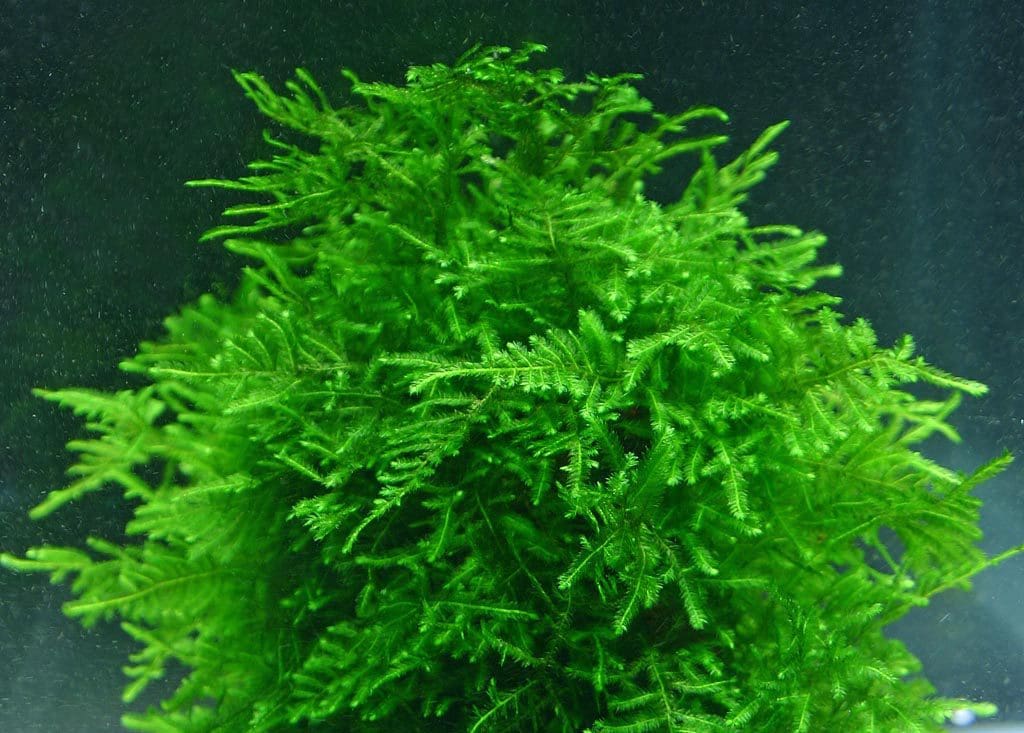Pondering upon the diverse array of aquatic plants, one might easily overlook the humble yet intriguing Java Moss. As you traverse through this article, you will unravel the uniqueness of this aquatic plant, known to lend an aesthetic touch to myriad aquarium ambiance while providing practical benefits. Carefully chosen information will enable you to comprehend its botanical origin, typical characteristics, and role in aquatic setups, creating a comprehensive landscape of understanding surrounding the Java Moss. It is these nuances, explored systematically throughout the article, that will provide valuable insights into this exceptional aquatic species.

Definition of Java Moss
Java Moss, scientifically known as Taxiphyllum Barbieri, is a popular freshwater aquatic plant utilized extensively in the aquarium trade for its versatility, hardiness, and aesthetic appeal. It’s a type of moss belonging to the Hypnaceae family and it has gained popularity due to its low maintenance needs and varying applications. It constitutes an integral part in creating a healthy and visually dazzling aquatic environment.
Scientific Classification of Java Moss
Java Moss belongs to the kingdom of Plantae and is classified within the division of Bryophyta, which houses the mosses. This moss belongs to the class of Bryopsida and is part of the order of Hypnales. Within the Hypnales order, Java Moss is categorized under family Hypnaceae and specifically belongs to the genus Taxiphyllum. Its scientific name is Taxiphyllum barbieri.
Species and Family of Java Moss
Taxiphyllum Barbieri, commonly known as Java Moss, is the species of the Taxiphyllum genus within the family Hypnaceae. This family consists of about 51 genera and more than 560 known species of mosses. Java Moss, however, with its hardy traits and lush green appeal, stands out among its Hypnaceae relatives and is integral to the aquarium hobby.
Natural Habitat of Java Moss
Java Moss originates from Southeast Asia, and it is commonly found in forests, riverbanks and humid areas of countries including Indonesia, Japan, the Philippines, Singapore, and Malaysia. It has an impressive ability to survive in a variety of environments, from submerged in water to being exposed to air in moist conditions. This makes it highly adaptable and resilient.
Physical Characteristics of Java Moss
The appearance of Java Moss can significantly enhance the visual appeal of your aquarium. Understanding its physical characteristics is key to the successful cultivation and maintenance of this aquatic plant.
Shape and Size of Java Moss
In terms of size, Java Moss is a small plant with stems typically reaching up to 4 inches in length. The leaves are minute and usually overlap each other, creating a carpet-like effect. These tiny leaves, bristling on the wiry stems, give it a fern-like or feather-like appearance.
Color and Texture of Java Moss
Java Moss has a vibrant green color that ranges from bright green to a darker shade, usually depending on the lighting conditions. The moss has a velvety texture, owing to the minute leaves and stems that it comprises.
Growth Patterns of Java Moss
Java Moss has a robust growth pattern. Under favorable conditions, it grows relatively quickly, forming extensive carpets or walls, which can be quite befitting for aquascaping purposes. This moss can attach itself to various hard surfaces, including rocks, driftwood, and aquarium glass.

Growth Requirements for Java Moss
Java Moss is renowned for its adaptable nature and minimalistic needs. It’s important to have an understanding of its growth requirements for successful cultivation.
Ideal Water Conditions for Java Moss
In terms of water conditions, Java Moss is quite resilient and flexible. It can thrive in both soft and hard water conditions. The optimal water hardness for Java Moss ranges from 6 – 20 dH.
Light Requirements for Java Moss
One of the advantages of cultivating Java Moss is the low light requirement. It can thrive in both low and high light conditions. However, providing moderate lighting can prevent the growth of algae on the moss.
Temperature and pH Levels for Java Moss
Java Moss can tolerate a wide range of temperature conditions, from 70 to 90 degrees Fahrenheit, with an ideal temperature being in the mid-70s. Regarding pH levels, Java Moss is flexible and can thrive in 5.0 to 8.0 pH, but a slightly acidic to neutral pH is ideal.
Cultivation of Java Moss
Cultivating Java Moss is relatively straightforward due to its robust and adaptable nature. It is not particularly demanding and can easily attach to a variety of substrates.
Propagation Methods for Java Moss
Propagation of Java Moss occurs naturally through fragmentation. As the moss grows, small parts break off and, if conditions are favorable, these fragments can form new growth.
Planting and Transplanting Java Moss
When planting Java Moss, you can tie it onto stones or driftwood or place it directly against the substrate or glass. Given its ability to adapt, the moss will attach itself firmly after some time. Transplanting the moss is as simple as cutting a part of it and moving it to the desired location.
Techniques for Encouraging Healthy Growth
Providing constant light, maintaining optimal water temperature and pH, as well as ensuring proper nutrient supply can help encourage healthy growth. Occasional trimming of the moss will also promote denser growth and prevent it from growing too wild.

Usage of Java Moss in Aquariums
Java Moss finds multiple uses in aquariums owing to its aesthetic appeal, versatility and the benefit it brings to the aquatic environment.
Benefits of Java Moss in Aquarium
Java Moss is not only aesthetically pleasing but is also beneficial to the aquarium’s health. It acts as a natural filter, absorbing excess nutrients, thus inhibiting the growth of harmful algae. Additionally, it provides shelter for various aquatic creatures and serves as a feeding ground for shrimp and fry.
Popular Java Moss Layouts and Designs
Given its versatile nature, Java Moss can be used in multiple ways in an aquarium layout. From carpeting the aquarium floor or adorning the walls to creating a moss tree or crafting a moss wall, Java Moss brings creativity to your aquarium design.
Maintenance and Care of Java Moss in Aquarium
Pruning is key to the successful maintenance and ongoing health of Java Moss. Trim the moss regularly to avoid it overtaking the aquarium. Also, adjust light exposure as excessive light can induce algae growth. Monitor water conditions to maintain ideal temperature and pH.
Maladies and Treatment for Java Moss
Despite its hardiness, Java Moss can be susceptible to few illnesses. Understanding these will help you keep your moss in top health.
Common Diseases Affecting Java Moss
One of the most common diseases that affect Java Moss is algae infestation. This usually occurs due to overexposure to light or excess nutrients in the water.
Preventing Illness in Java Moss
You can prevent illness in your Java Moss by maintaining optimal lighting, observing regular pruning, and ensuring clean aquarium water. Try to keep nutrients at a balanced level as both deficiency and excess can lead to illness.
Treatments for Sick Java Moss
For treatment, you could manually remove algae from the moss. In the case of severe infestations, consider using aquarium-safe algaecides. If the moss is affected severely by illness, you might need to remove and quarantine the affected portions to prevent spread.

Ecological Role of Java Moss
Java Moss plays an important ecological role in an aquarium environment with its ability to provide shelter and food to a variety of aquatic organisms.
Java Moss as Habitat for Aquatic Creatures
Java Moss serves as an ideal habitat for a variety of aquatic creatures. Its dense, carpet-like growth provides ample hiding spots for shrimps and fry, protecting them from potential predators.
Positive Impact on Water Quality
Java Moss contributes to water quality by acting as a natural filter. It absorbs excess nutrients in the water, thus helping to prevent the growth of harmful algae and maintaining clear, healthy water.
Role of Java Moss in Food Chain
Java moss plays a role in the food chain within the aquatic ecosystem. It provides food for a variety of organisms, including shrimps and certain species of fish which forage on the biofilm that forms on the Java Moss.
Java Moss in Aquascaping
In the sphere of aquascaping, Java moss holds a solid reputation. It’s loved for its lush green appeal and the various aesthetic possibilities it offers.
Java Moss as Aquatic Decoration
Java Moss can be used for a variety of decorative purposes in an aquarium. It can be cultivated to form a carpet effect on the tank bottom, a lush wall on the sides of the tank, or wrapped around stones and driftwood for a natural, forest-like aesthetic.
Suitability for Different Aquascaping Styles
Java Moss, with its lush green outlook and versatile nature, is suitable for different aquascaping styles. It fits perfectly in a natural style setup, suitable for Dutch or jungle styles, and can also be applied creatively in Iwagumi or Ryoboku styles.
Integration with Other Aquatic Plants
Java Moss integrates well with other aquatic plants. It can complement taller species by forming a lush carpet at the ground level or can be used as a filler plant between rocks.

Java Moss in Breeding Tanks
Java Moss serves as an essential component in many breeding tanks, providing necessary cover for fry, being a food source, and improving overall tank health.
Role of Java Moss in Breeding Tanks
In breeding tanks, Java Moss provides a safe haven for fry, offering ample hiding spots to protect them from predators. This moss also serves as a grazing site, where fry can feed on microscopic organisms that thrive on the moss.
Compatibility with Various Fish Species
Java Moss is compatible with a wide range of fish species and is particularly favorable for shrimp and small, peaceful fish species that relish in dense plant cover. It is not recommended for tanks with large, herbivorous fish as they may destroy the moss.
Providing Cover for Fry with Java Moss
The dense, carpet-like growth form of Java Moss provides excellent cover for fry. This not only allows for safe hiding spots from potential predators but also gives fry a secure feeling in their early stages of life.
Impact of Java Moss on Aquarium Health
Java Moss positively contributes to overall aquarium health. From oxygen production to pH level stability, the impact of Java Moss is vast.
Oxygen Production and Java Moss
Like all aquatic plants, Java Moss plays a role in oxygen production. Through the process of photosynthesis, it helps increase the oxygen levels in the aquarium, thereby contributing to better respiratory health of the aquatic inhabitants.
Java Moss and Algae Prevention
Java Moss has a significant role in combating and preventing the growth of algae. By absorbing excess nutrients in the water, it deprives algae of the necessary resources for their proliferation, thereby acting as a natural algae deterrent.
Impact on pH and Nitrate Levels in the Aquarium
Java Moss also has the ability to stabilize pH and nitrate levels in the aquarium. By utilizing bicarbonates in the water, it aids in maintaining stable pH levels. It also absorbs nitrates, thus helping to maintain overall water quality. Java Moss, with its hardiness, aesthetic appeal, and essential role in the aquarium environment, is truly a valuable addition for any aquatic enthusiast.